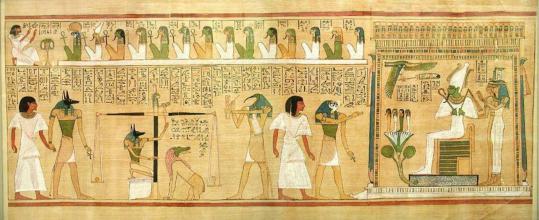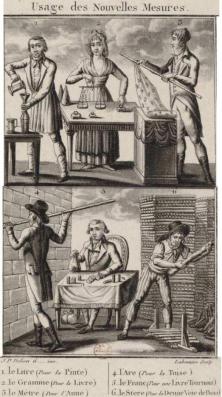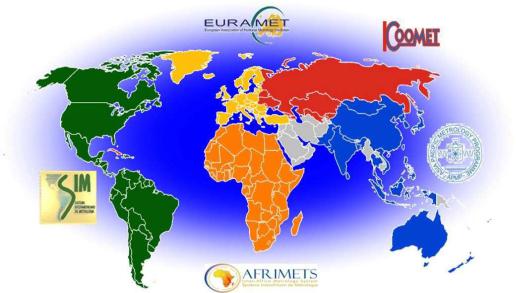
8588
.pdf6. Say if the following statements are true or false:
1.Standards are required for some measurements.
2.Research and development is not be possible without reliable experimental data.
3.Fundamental research requires metrology in some cases.
4.Industry, research laboratories and universities have been developing and improving methods for reliable and accurate data.
5.Thermoelectric materials are promising candidates to achieve the challenge to reduce energy waste.
6.Most important applications of TE materials are in coolers and power generators.
7.Research on biomaterials is increasing.
7. Project Work: «Organizations on metrology in my country»
Tell the class about any organization on metrology functioning in your country on the
following plan:
1.When was this organization founded?
2.Where is it situated?
3.What kind of services does this organization provide?
4.Is it the only organization in metrology in your country?
5.What specialists work there?
6.In what spheres of human activity does this organization provide metrological services? Give the examples.
7.What metrological laboratories does this organization include?
8.Is this organization important in your country?
9.Are you planning to work in this organization in the future?
10.Have you ever visited this organization?
10
UNIT 2. HYSTORY OF METROLOGY
1. Read the text about the history of metrology.
A brief history of metrology: past, present, and future
Part 1
1. Introduction
In these times where significant changes in the International System of units (SI) are taking place, it may be worth to establish a short assessment about when and why the question of metrology has emerged. As a matter of fact, the history of metrology has included plenty of events. Since enough books and courses already have thoroughly treated this subject, we shall highlight here only the most significant of them. It is especially interesting to try to understand what have been the difficulties encountered, and which answers have then been found to overcome them.
We shall conclude by an overview of what are today the metrological performance attained for the different physical quantities and contexts, and what are our current expectations for the future.
2. Some historical confusions, having hampered metrology The confusion between weight and volume
The difference between weight and volume was not so clear in the remote past. Actually, the measurement value associated to weight, for a given amount of goods, is exact, whereas the measurement of volume is approximate; it remains today something of this, would it be only in the today non-modifiable name “Bureau des Poids ET Mesures”.
For most goods, the equivalence between weight and volume remained sufficient for commercial operations during centuries, at least, for instance, for liquid goods. But an important sector for trade was seeds. It is clear that in this field the confusion may lead to inaccuracy, and moreover to treachery.
Legal institutions did their best to take into account the consequence of this confusion. For instance, in France, Minister Colbert (1670) clarified the notions of
11
“mesure rase” (flat surface of a seed barrel) and “mesure comble” (curved surface of a seed barrel). Even so, the seed quantity remained dependent on the pressure exerted on the upper surface of the barrel, and on the barrel cross-area.
The confusion between weight and mass
Still today in current life, the distinction between the two parameters is often ignored, whereas the weight is a force, depending on the location, and the mass is a scalar, and intrinsic to an object. The no longer used unit kilogram-force was in this respect not helpful to raise the ambiguity.
The confusion between temperature and heat flux
A similar observation, i.e. a distinction still today ignored, concerns temperature and heat flux. But it should be noted that a scientific interpretation of both concepts took place very early in history. At the time of Boltzmann, very little was yet known about the intimate structure of matter, in terms of atoms and particles; and despite of this, a theory for thermodynamics based on statistical distribution of kinetic energies could be elaborated.
3. Does physics obey to political power?
For the quantities most important for trade, i.e. weight and length, the definition of units was extremely diverse, regarding geographic dispersion. This was an obvious obstacle to equitable and efficient transactions.
As we shall see, in many countries political authorities tried, therefore, to impose their views on the subject, so as, at the same time, to confirm their authority.
My glossary:
1.non-modifiable – немодифицируемый,
2.treachery – вероломство, предательство,
3.exert – приводить в действие, оказать давление,
4.force – сила, мощность, воздействие, нагрузка,
5.cross-area – площадь поперечного сечения,
12
6.scalar – шкала, масштаб, градация,
7.intrinsic – свойственный чему-либо,
8.ambiguity – неопределенность, двусмысленность,
9.heat flux – тепловой поток,
10.Boltzmann – Больцман,
11.dispersion – рассеивание, разбрасывание,
12.equitable – беспристрастный, объективный,
13.elaborate – уточнить, объяснить подробно
2. Read the text and answer the questions:
1.What is the confusion between weight and volume?
2.What was an important sector for trade? Why?
3.Who clarified the notions of “mesure rase” (flat surface of a seed barrel) and “mesure comble” (curved surface of a seed barrel)?
4.What is the weight?
5.What is the mass?
6.What was an obvious obstacle to equitable and efficient transactions?
3. Read the second part of the text about the history of metrology and find out the meaning of the words in bold.
A brief history of metrology: past, present, and future
Part 2
4. Historical overview The most ancient past
The four great antique civilizations, China, India, Egypt, and Mesopotamia, have all had early knowledge of metrology.
13

In China, archaeological discoveries demonstrate the use of a decimal metric system as soon as 1600 BC. Around 200 BC, at the same time the whole country was unified, a unique unit system was also spread into it.
The accurate dimensioning of Egyptian pyramids witnesses of an advanced mastery.
Significant research works on the subject have been led by University Paris 7.
The well-known papyrus of Hunefer (1300 B.C.) brings a poetic illustration thereof (Fig. 1).
Fig. 1 Weighting of the heart at the judgement of the soul. Source: British Museum. The Middle Ages and monarchic times
Although very different, these two long history periods present common features concerning metrology.
The political power was much disseminated in the Middle Ages, and was on the contrary much centralised under monarchy, which sometimes confined to absolutism. The feudal system, characterised by dispersion, subsisted in some way under monarchy. The problem regarding metrology was the same in both cases: the affirmation of authority. Every king, lord, town council, monastery, etc. had a tendency to define its own units, as a sign of its power, according to the principle “a king, a law, a weight, a measure”.
Hence, a great number of different units, also different according to the nature of the goods, measured. Thus, a pound of weight was different for wheat, barley, or flour.
14
Just to illustrate the problem (but, in fact, innumerable examples of this could be given), the measurement of surfaces in the Généralité de Paris (the surroundings of Paris), in 1780–although a late date − made use of the unit arpent, for which existed at least 48 definitions. Moreover, each of these definitions used specific subunits, the length perche being worth here 20 feet, there 25 feet, and yet elsewhere 22 feet 6 inches].
Very complicated transactions resulted of this, voluminous manuals and many calculations were required for the unavoidable conversions.
The progress brought by illuminism and the French Revolution
The intervention of the French Revolution in the field of measurement and metrology had social and ethical purposes. The unit system should be unique and equal for all, a goal consistent with the motto of the Republic, and with the expectations of the population as collected by the cahiers de doléances (peoples' claim books).
The use of the decimal system introduced drastic simplifications, especially for the determination of surfaces and volumes. These simplifications applied to any citizen, enabling him to proceed to easier exchanges with others, and hence increasing in general welfare.
In fact, the Revolution imposed both things, still unfamiliar, which were decimal numeration and a simplified measurement unit system.
In most domains the proposed reforms were successful, and progressively adopted by other countries, first in Europe, and later beyond (Fig. 2).
However, it should be noted that the attempts of revolutionists in the domain of time were unsuccessful. The goal was to implement, in addition to the revolutionary calendar, weeks of 10 days, hours of 100 min, and minutes of 100 s. But the way to count and display hours and days is something so familiar to everyone, that this reform has always remained unpopular and was finally never applied.
15

Fig. 2 New decimal units.
From 17th to 21th century
The main evolutions in the field of metrology during this last period have been the development of scientific discoveries, the intensification of exchanges, and the settlement of international institutions.
5. Today's situation
The international institutions
The context today for metrology is fortunately more cooperative than competitive. A set of international institutions, closely linked to one another, have taken place:
Conférence Générale des Poids et Mesures (CGPM);
Comité International des Poids et Mesures (CIPM); and
Bureau International des Poids et Mesures (BIPM).
These institutions have received authority to act in matters of world metrology from the Convention of the Metre (a diplomatic treaty between 51 nations initially, but today approved by almost all nations).
16
This particularly concerns the demand for measurement standards of ever increasing accuracy, range, and diversity, and the need to demonstrate equivalence between national measurement standards. The Convention was signed in Paris in 1875 by representatives of 17 nations.
The National Metrology Institutes (NMIs), such as PTB in Germany, or LNE in France, constitute the local relays of the international institutions.
The global organization is completed by World Regional Institutes (RMOs), according to the map in Figure 3.
The regional institutes are less known than NMIs; however, their role is important. They have responsibilities:
·to facilitate traceability to primary realisations of the SI;
·to coordinate comparisons of national measurement standards;
·to make mutual reviews of technical competencies and quality systems;
·to cooperate in metrology research and development;
·to operate joint training and consultation; and
·to share technical capabilities and facilities.
Examples of RMOs are:
EURAMET (Association Européenne des Instituts Nationaux de Métrologie);
AFRIMET (Intra-Africa Metrology System − supported by the Technical Cooperation of PTB);
COOMET (Euro-Asian Cooperation of National Metrological Institutions); and APMP (Asia Pacific Metrology Programme).
For a more efficient organisation, world regions are sometimes splitted into subregions.
17

Fig. 3 RMOs around the world.
The unit system
The 11th CGPM (1960) adopted the name Système International d'Unités
(International System of Units, abbreviation SI), for the recommended practical system of measurement units.
SI units are divided into two classes: base units (7) and derived units.
To have a realistic approach of practices, these two-unit sets are completed by the socalled SI-compatible units, SI-temporarily compatible units, and SI-non-compatible units. Base units are the following:
·second s (time);
·metre m (length);
·kilogram kg (mass);
·ampere A (current);
·Kelvin K (temperature);
·Candela c (luminosity);
·mole m (matter).
The most recent changes
18
The 26th CGPM has taken place in November 2018, and has approved several significant changes through its Resolution A. Goals of this evolution have been recalled, i.e. to build a system that would be “uniform and accessible world-wide for international trade, high-technology manufacturing, human health and safety, protection of the environment, global climate studies and basic science …, stable in the long term, internally self-consistent, and practically realizable”.
Thus, values of seven general constants, as described hereunder, whose numerical value was initially obtained by experimentation, have been defined as exact values.
My glossary:
1.dimensioning - задание размеров,
2.disseminated - рассредоточенный,
3.dispersion - рассеивание,
4.pound - фунт,
5.arpent - арпан, французская единица площади,
6.illuminism – иллюминатство,
7.traceability – прослеживаемость,
8.SI-compatible units – совместимые устройства по международной системе СИ,
9.luminosity – светосила, (оптика),
10.mole – моль, единица количества вещества в Международной системе единиц
4. Match the words and make word combinations. |
|
1. antique |
a. transactions |
2. archaeological |
b. value |
3. research |
c. reviews |
4. specific |
d. institutions |
5. complicated |
e. civilizations |
6. decimal |
f. system |
19
